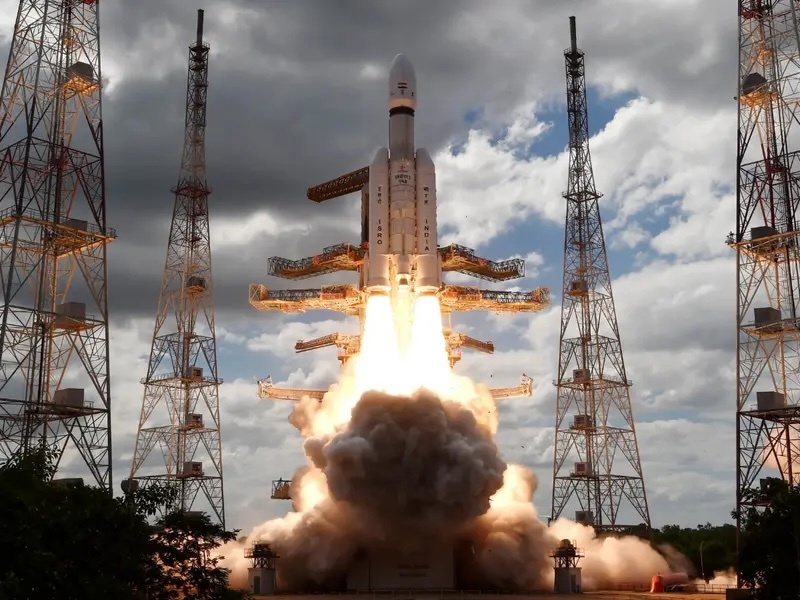7.08.2025

File picture of an ISRO LVM3 rocket lifting off from the second launchpad at India's lone spaceport Satish Dhawan Space Photograph: (ISRO)
The Indian Space Agency ISRO is looking to operationalise its largest-yet rocket launchpad by the year 2029. Expected to be built at a cost of Rs 3985 crore (approx $460mn), the third launchpad(TLP)will be an addition to the existing two launchpads at the Satish Dhawan Space Centre, Sriharikota, Andhra Pradesh, which is India's lISRO sets 2029 target for Next-gen rocket launchpadone spaceport.

According to the Indian Space Minister Dr. Jitendra Singh, the Financial approval for the Third Launch Pad Project was accorded in March this year. Subsequently, the Geo technical investigation and topography survey of the site was completed by May. In response to a Parliament question, Minister Singh said that offers are under evaluation for road works and electrical works, multiple work packages have been identified for the establishment of the TLP facilities.
Outlining the four major milestones, Dr. Singh said, completion of civil works (targeted by May
2028), establishment of fluid systems and associated propellant storages (targeted by July 2028), establishment of launch pad facilities (targeted by September 2028) and commissioning of the facility by March 2029.
He added that the Department of Space, ISRO's parent department proposes to partner with Indian industry, who are selected through a tendering
process ensuring Make-in-India and Atmanirbhar Bharat(self-reliant India) to the maximum extent possible. Further, he said that the specific details of such collaborations will be available after the completion of the bidding process and placement of contracts.
Existing Indian Launch infra and why a TLP is needed
At present, the Indian spaceport at Sriharikota is equipped with two launchpads- the first launchpad, which is meant for smaller rockets such as PSLV and SSLV, and the GSLV Mk2, while the second launchpad is capable of launching all rockets right from the smallest SSLV to the largest LVM3. The first launchpad has served for more than thirty years, whereas the second launchpad has served for more than twenty years.
The Third Launch Pad project is meant to enable the launch of ISRO's proposed 90-meter-tall Next Generation Launch Vehicle(NGLV) and also support as a standby launch pad for the Second Launch Pad at Sriharikota. For comparison, India's existing variants of GSLV rockets are 43 meters and 52 meters tall.
The TLP will also enhance the launch capacity for future Indian human spaceflight missions. The TLP will support the more capable semi-cryogenic engine variant of the LVM3 rocket, and also the scaled-up version of India's proposed NGLV rocket. In addition to the Gaganyaan Human Spaceflight programme which is a work-in-progress, the Indian government has also announced a space vision that includes setting up an Indian space station and carrying out crewed moon landings.
India's second spaceport
As the launch infrastructure at the existing spaceport is being scaled up in Sriharikota, India is also building a second spaceport at Kulasekarapattinam, Tamil Nadu. While the primary spaceport at Sriharikota, Andhra Pradesh is meant to launch all types of rockets(large and small), the upcoming facility in Tamil Nadu is meant to launch smaller rockets such as the ISRO-built SSLV rocket and similar-sized launch vehicles being built by Indian startups.
Owing to its geographic location, Kulasekarapattinam enables fuel-efficient launches towards the south pole(eventually meant to reach polar orbit, where satellites circle over the Earth's poles). When smaller rockets are presently launched from Sriharikota, they lose their fuel-efficiency and this degrades its ability to carry optimum loads to space. Rockets launched from Sriharikota towards the south pole need to perform a turn manoeuvre to avoid overflying the island nation of Sri Lanka. This manoeuvre consumes fuel and affects efficiency. However, this manoeuvre can be entirely avoided when launching from Kulasekarapattinam, which is closer to India's southernmost tip.
Quelle: WION
